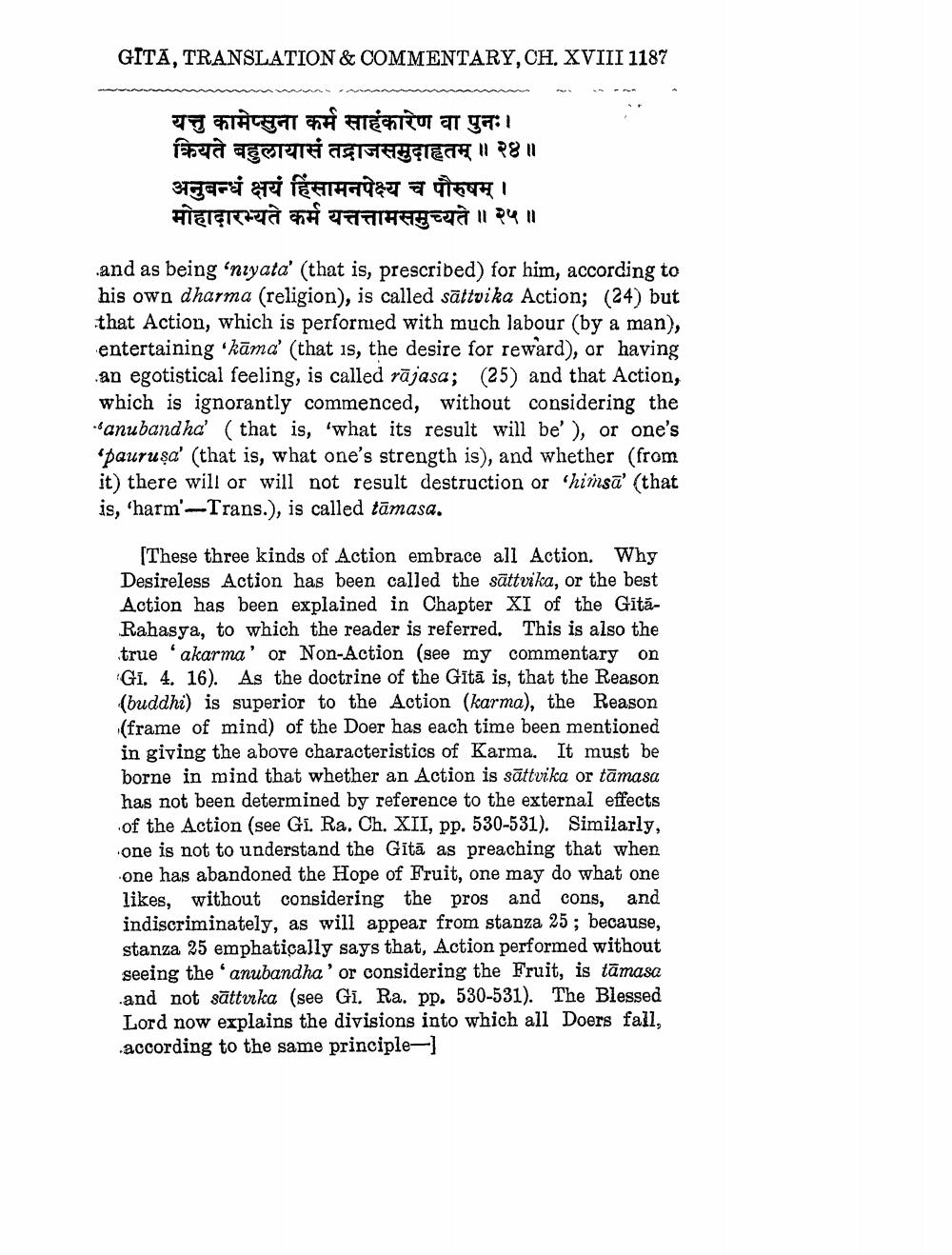________________
GITĀ, TRANSLATION & COMMENTARY,CH. XVIII 1187
यत्तु कामेप्सुना कर्म साहंकारेण वा पुनः। क्रियते बहुलायासं तद्राजसमुदाहृतम् ॥ २४॥ अनुबन्धं क्षयं हिंसामनपेक्ष्य च पौरुषम् । मोहादारभ्यते कर्म यत्तत्तामसमुच्यते ॥ २५ ॥
and as being 'niyata' (that is, prescribed) for him, according to his own dharma (religion), is called sättvika Action; (24) but that Action, which is performed with much labour (by a man), entertaining "kāma' (that is, the desire for reward), or having an egotistical feeling, is called rājasa; (25) and that Action, which is ignorantly commenced, without considering the Sanubandha' (that is, 'what its result will be' ), or one's pauruşa' (that is, what one's strength is), and whether (from it) there will or will not result destruction or himsă' (that is, 'harm' -Trans.), is called tāmasa.
[These three kinds of Action embrace all Action. Why Desireless Action has been called the sättvika, or the best Action has been explained in Chapter XI of the GităRahasya, to which the reader is referred. This is also the true 'akarma' or Non-Action (see my commentary on Gí. 4. 16). As the doctrine of the Gītā is, that the Reason (buddhi) is superior to the Action (karma), the Reason (frame of mind) of the Doer has each time been mentioned in giving the above characteristics of Karma. It must be borne in mind that whether an Action is sättvika or tāmasa has not been determined by reference to the external effects of the Action (see GI. Ra. Ch. XII, pp. 530-531). Similarly, one is not to understand the Gītā as preaching that when one has abandoned the Hope of Fruit, one may do what one likes, without considering the pros and cons, and indiscriminately, as will appear from stanza 25; because, stanza 25 emphatically says that, Action performed without seeing the 'anubandha' or considering the Fruit, is tāmasa and not sätturka (see Gi. Ra. pp. 530-531). The Blessed Lord now explains the divisions into which all Doers fall, according to the same principle-1




